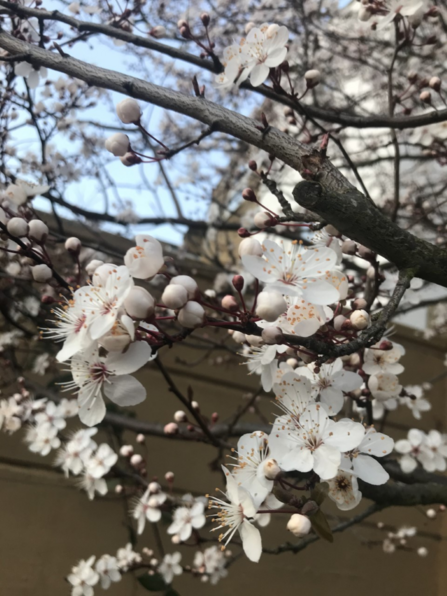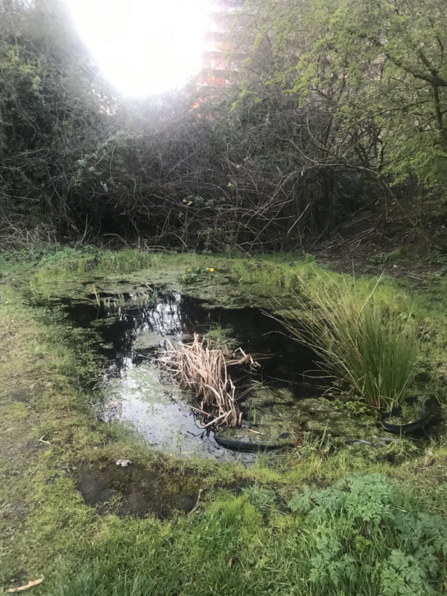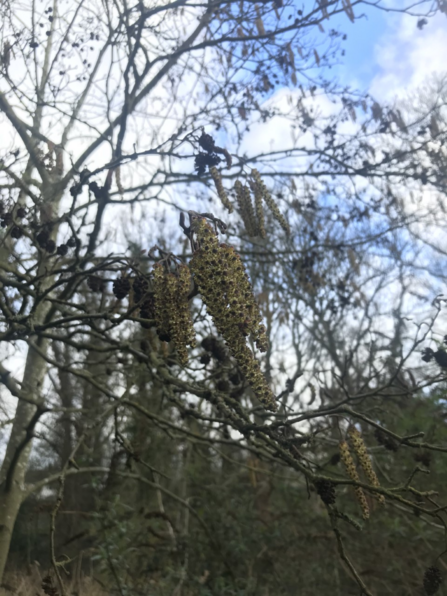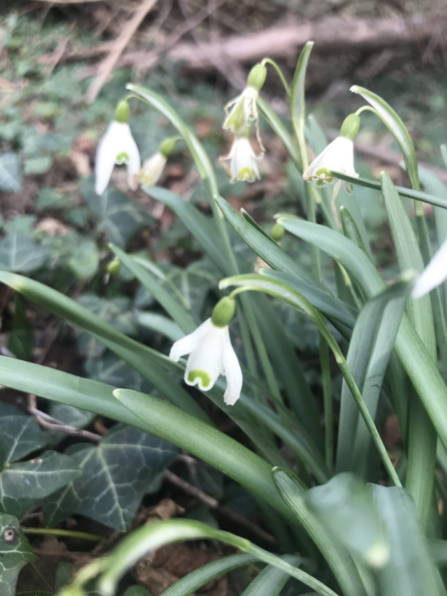

You may have heard birdsong more frequently as the days have started to become longer. This is because during spring male birds are trying to attract mates to produce offspring that will hatch during the warmer summer temperatures. The dawn chorus is the first chance birds get to attract mates and can be heard across London just before the sun rises. It is thought this is the perfect time to attract a partner as the light is too low to forage and for predators to accurately locate the loud singers. Dawn is also a quiet time, allowing the songs to be heard over much greater distances. Birdsong is also used to defend territories, among the most ferocious defenders are our native robins (Erithacus rubecula), whose red breasts are used to warn off potential rivals.
On a walk around the Centre for Wildlife Gardening in Peckham, a blackcap’s (Sylvia atricapilla) song was heard. Blackcaps are warblers that usually visit during summer and overwinter in hotter climates such as Spain and North Africa. They can be identified by males having a black cap and the females possessing a bronze one. However, recent studies have found a population of these birds to spend their winter months in the UK. This is likely due to a plentiful supply of food from garden feeders, as well as a warmer climate as a result of global warming. This is perhaps the reason we discovered a blackcap as prematurely as early March.

A singing blackcap credit David Tipling/2020VISION
Early spring also marks the start of amphibians coming out of hibernation and preparing to find mates. Common toads (Bufo bufo) and frogs (Rana temporaria) have recently been seen around ponds at many of the London Wildlife Trust reserves, but how do you tell the difference between these two water lovers? Toads possess golden narrow eyes with warty skin and short legs, in contrast, frogs have rounder eyes, smooth skin and very long legs. Also, because toads have short legs, they walk rather than hop as frogs do.
Both these animals hibernate during the winter months, when food is scarce and temperatures are low. You may find them under logs, in compost heaps and even at the bottom of ponds. Amazingly, frogs can bury themselves in the mud and breathe through their skin for prolonged periods.

Pond full of frogs and toads credit Bobbi Benjamin
As the weather begins to become milder, toads and frogs flock to ponds in the hope of spawning. Year after year these creatures return to the same water source, hatching at this same place every year. Males will latch onto females to impregnate them, multiple males can be seen attempting to mate. Tragically, this can lead to the death of the female as the weight of the many males can result in her drowning. In both species, the eggs are fertilised by mates as they’re laid. Frogspawn is identified through large clumps floating near the water’s surface, whereas toad spawn is laid in long strands near plants under the water’s surface. Eggs hatch into tadpoles in around two to four weeks.
Although early spring is a time when many trees are just beginning to reawaken, some species take this early opportunity to blossom and reproduce. Among these are hazel trees, famously known for their nuts and “lamb tails” or catkins.

Catkins or “Lambs tails” blow in the wind at the Crane Park Island credit Bobbi Benjamin
Trees pollinate in several ways, including with the help of a wide range of animals and other dispersion techniques. One such example is how the hazel tree uses wind to disperse its pollen. Each tree will grow catkins, which are male, and small red female flowers. Wind blows pollen from catkins to other hazel tree flowers and once pollinated the flower will produce a nut.
This tree species is not only useful to humans for hurdle and furniture making but also, a range of wildlife. Its leaves are eaten by caterpillars and its nuts are a favourite of small mammals such as dormice and birds like woodpeckers and tits. Additionally, coppiced hazel acts as tree cover for ground-nesting birds such as the nightjar.

Snowdrops, one of the earliest flowers to appear in Spring, this year blossomed at Crane Park Island in early February.
Credit Bobbi Benjamin
In these past few weeks, I have explored many Great North Wood sites and have uncovered many wildflower species sprouting. Among these are the beautiful British bluebells (Hyacinthoides non-scripta), common snowdrops (Galanthus nivalis) and aromatic wild garlic (Allium ursinum). Seeds will only grow when they have experienced cold conditions and start to experience warmer weather, as well as longer periods of daylight. This is to ensure there is enough sunlight for plants to photosynthesis and grow, increasing their survival rate.
The UK possesses around 50% of the world’s bluebells which is why the conservation of the British bluebell is so important. They are an indicator of ancient woodland and take around five to seven years to transform from bulb to flower. British or English bluebells may be mistaken for introduced Spanish bluebells (Hyacinthoides hispanica) which can oucompete and hybridise with the native species. Both flower early and are crucial in providing nectar for insects like bees and butterflies.
From late February to early March I have been fortunate enough to experience the joys of spring starting in our wild spaces across London. The change of seasons is a natural phenomenon that should be enjoyed by all. Perhaps you too could relish in the gradual changes that are yet to come over these coming weeks?

Credit Penny Dixie
About Keeping it Wild
Keeping it Wild is a new project, funded by National Lottery Heritage Fund, that will empower and inspire 600 young people aged 11-25, from backgrounds currently under-represented in natural heritage, to gain vital skills while discovering, conserving and sharing their experiences of the capital’s wild spaces. 16-25-year-olds are invited to apply for a 12 week Traineeship, paid via a bursary. They based at one of our reserves, where they spend time learning from the London Wildlife Trust team, gaining valuable practical skills in urban nature conservation. Additional support for the Traineeships has been generously donated by the Worshipful Company of Tallow Chandlers.
